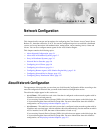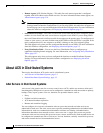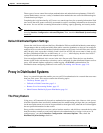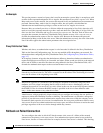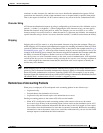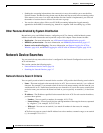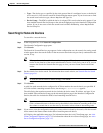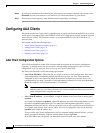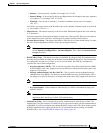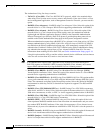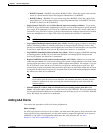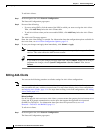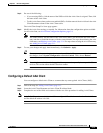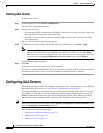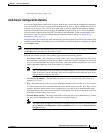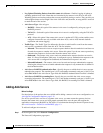
CHAPTER
3-1
User Guide for Cisco Secure Access Control Server
OL-9971-01
3
Network Configuration
This chapter details concepts and procedures for configuring the Cisco Secure Access Control Server
Release 4.1, hereafter referred to as ACS. You use the configuration process to establish a distributed
system, and set up interaction with authentication, authorization, and accounting (AAA) clients and
servers. You can also configure remote agents for the ACS Solution Engine.
This chapter contains the following topics:
• About Network Configuration, page 3-1
• About ACS in Distributed Systems, page 3-2
• Proxy in Distributed Systems, page 3-3
• Network Device Searches, page 3-6
• Configuring AAA Clients, page 3-8
• Configuring AAA Servers, page 3-14
• Configuring Remote Agents (ACS Solution Engine Only), page 3-18
• Configuring Network Device Groups, page 3-23
• Configuring Proxy Distribution Tables, page 3-27
About Network Configuration
The appearance of the page that you see when you click Network Configuration differs according to the
network-configuration selections that you made in the Interface Configuration section.
The tables that might appear in this section are:
• AAA Clients—This table lists each AAA client that is configured on the network, together with its
IP address and associated protocol.
If you are using Network Device Groups (NDGs), this table does not appear on the initial page, but
is accessed through the Network Device Group table. For more information about this interface
configuration, see Displaying Advanced Options, page 2-5.
• AAA Servers—This table lists each AAA server that is configured on the network together with its
IP addressand associatedtype. Afterinstallation, thistable automaticallylists themachine onwhich
ACS is installed. In ACS SE, the name of the machine is listed as self.
If you are using Network Device Groups (NDGs), this table does not appear on the initial page, but
is accessed through the Network Device Group table. For more information about this interface
configuration, see Displaying Advanced Options, page 2-5.



